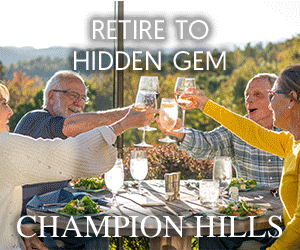Golf has certainly gotten ultra complicated over the last decade, let alone the last century. From computerized swing analysis to oversized drivers to balls flying farther to signature architectural designs to extravagant maintenance budgets, the sport has taken its share of twists and turns – and hits from critics.
But a humble and even simpler example of golf is closer than you might think for Triangle residents, where you can walk 18 holes in less than three hours; and where hitting a fairway or green means something special.
Willow Springs Country Club, with its plain black-and-white scorecard and tightly compacted layout designed by its anonymous former pro who was undoubtedly inspired by the legendary Donald Ross, is celebrating its 100th anniversary in 2015.
The former Wilson Country Club is an hour’s drive from the Apex and Cary area, and less than 30 minutes from northeast Wake County, just off Interstate 795 along the once booming U.S. 301 corridor, and close to the famous Parkers BBQ and chicken joint.
Wilson has seen better days economically, but Willow Springs Country Club remains viable in the community, with 200 members, 20,000 rounds a year and a ton of historic memories. Ben Hogan once played here; so did Babe Zaharias, along with a host of other top pros and amateurs during the club’s heyday more than a half century ago.
Walk off each green (which used to be sand until 1947) and a tee awaits five seconds away, much like Ross designed most of his courses in the state of North Carolina. Heck, for the longest time Willow Springs didn’t even have golf carts.
“It is 100 percent a throwback,” said 40-year-old Chance Cox, a Wilson resident who has played the layout since he was 15. “The golf courses were designed back in those days to walk with a caddie. A lot of good players have played out here over the years because Highway 301 used to be the main drag.”
Scoffing at the 6,138-yard layout from the white tees is often a mistake, even though there are no undulating fairways, no two-tiered greens and no par-5 that measures longer than 520 yards.
“We still have a lot of tournaments with really good players and they’ll look on the scorecard and think they’re going to eat it up, and when they’re done they’ve shot a 74 or 75,” said Jimmy Gurkin, who along with wife Paula has owned the course for more than 25 years. “It is narrow, you have to stay in play and think about what you’re doing. You can’t just get up there and hit it everywhere.”
Most golf courses now feature greens that can measure anywhere from 6,000-8,000 square feet. Willow Springs Country Club “postage stamp” putting surfaces average around 4,000 square feet. Accuracy and patience are keys here if you want to score.
The course is laid out on just 115 acres, with 20 acres of fairway and 20 acres of rough. With just a $150,000 annual maintenance budget it’s hard to differentiate between the two, but course condition isn’t the selling point here.
Those coming for a hickory shaft tournament on July 31 to commemorate the 100th anniversary of the course will get it, so will golf’s purist who venture to Wilson to partake in a piece of North Carolina golfing history over the next six months.
Gurkin refers to his layout, one of the oldest on the Eastern Seaboard, as “just a great little golf course”
Few can argue, with its towering trees along the right side of the second hole, to the finishing par-3 lined with roses along the left side of the tee box. The flowers, more than two dozen strong, were planted five years ago in memory of Gurkin’s mother Louise, who lived to be 101 years old.
“I kind of like to make this scenario,” Gurkin said when describing Willow Springs and its challenges. “You are at a party and you run up to a guy you don’t know that plays golf a little bit and you want to start a conversation. He says, ‘Well, what do you shoot?’ And you say, ‘Well, I shoot about 76 or 78.’ He says, ‘Where do you play?’ And you say, ‘Well I play out at Willow Springs.’ And he says, ‘You must be a pretty good player to shoot that kind of score.’
“Hitting a green means something here,” Gurkin added. “The bump-and-run is a vital part of your game here. That’s sort of a lost art in golf.”
The only thing “new” at Willow Springs Country Club is a Centennial Course logo Gurkin’s daughter Michelle designed back in the “big city” of Raleigh. It features a towering oak tree shadowing a bench underneath weeping leaves.
It’s a nice scene setter for a course worth celebrating.

















